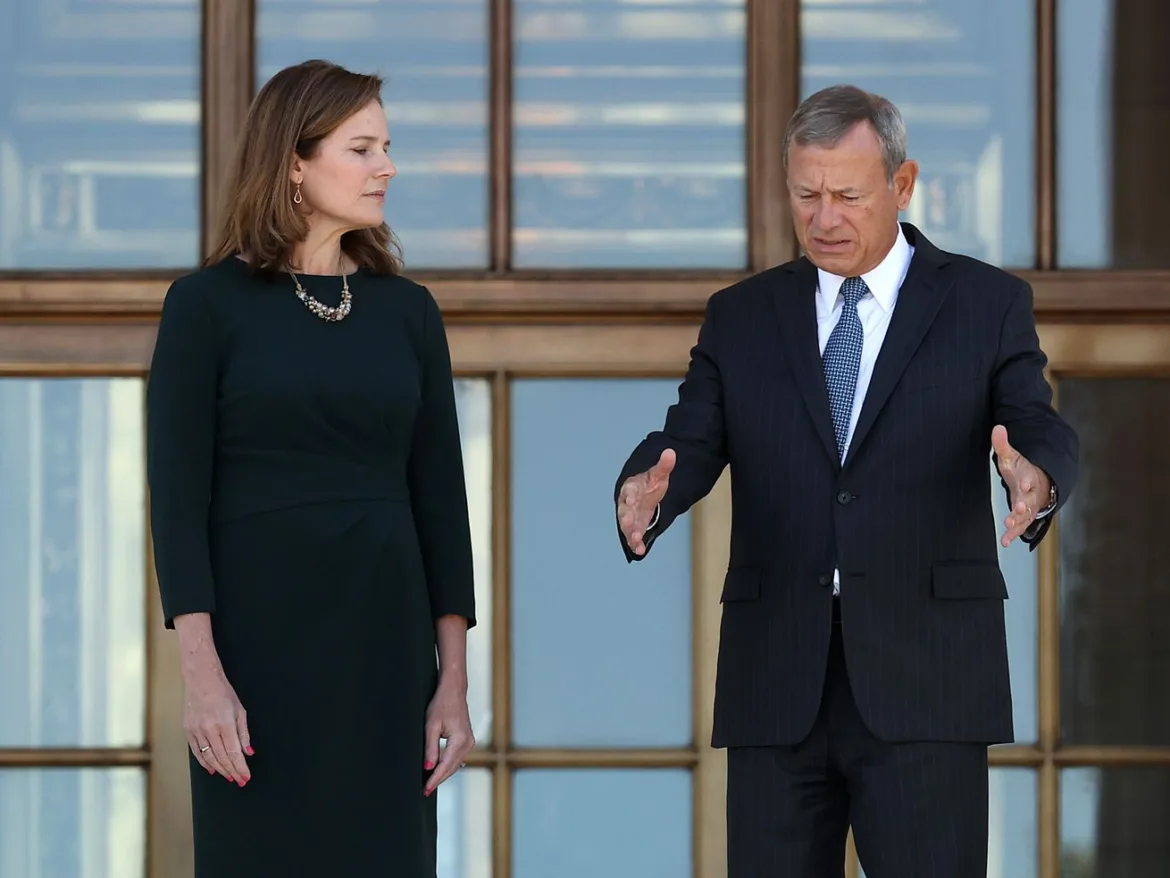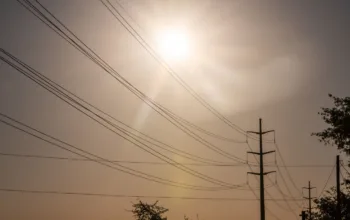It is hard to believe that Justice Amy Coney Barrett actually agrees with her own opinion.
The Supreme Court handed down a brief order on Tuesday allowing an unconstitutional Texas state immigration law to go into effect — although the law did not stay in effect for very long because of an order handed down by a different court late Tuesday night. The case is known as United States v. Texas.
Though the Supreme Court’s order was temporary, the result is quite surprising. Texas’s law, which allows state officials to arrest migrants and state courts to order them deported to Mexico, violates 150 years of settled law establishing that the federal government, and not the states, gets to decide which foreign nationals may enter or remain in the United States.
The full Court did not explain itself, but Justice Amy Coney Barrett wrote a brief explanation, joined by Justice Brett Kavanaugh, of why she voted to allow the Texas law to take effect. Her opinion says that she will tolerate a dubious order handed down by a right-wing appeals court, which reinstated the Texas law after a federal trial judge blocked it. But Barrett’s opinion also contain some language indicating that her tolerance won’t last forever.
Notably, the appeals court reacted to Barrett’s opinion in mere hours, scheduling an oral argument for the next morning on whether the Texas law should remain in effect. It then issued a second order later that night that effectively suspends the Texas law for the time being.
All three of the Court’s Democratic appointees dissented. They would have blocked Texas law from taking effect at all.
Texas’s law is unconstitutional under extraordinarily well-settled law
There is no plausible defense of Texas’s deportation law under existing Supreme Court precedents. The Court has held consistently, over at least a century and a half, that “the authority to control immigration — to admit or exclude aliens — is vested solely in the Federal Government.”
This principle, that the federal government has virtually exclusive authority over immigration policy, stretches back at least as far as the Court’s decision in Chy Lung v. Freeman (1875), which held that “the passage of laws which concern the admission of citizens and subjects of foreign nations to our shores belongs to Congress, and not to the states.”
The reason why this principle exists is to prevent a single state’s mistreatment of a foreign national from harming US relations with another country. As the Court warned in Hines v. Davidowitz (1941), “international controversies of the gravest moment, sometimes even leading to war, may arise from real or imagined wrongs” committed against foreign nationals.
Nor has this principle faded from the Court’s jurisprudence over time. As recently as its decision in Arizona v. United States (2012), a majority of the justices reaffirmed that “it is fundamental that foreign countries concerned about the status, safety, and security of their nationals in the United States must be able to confer and communicate on this subject with one national sovereign” and not with “50 separate States.”
Arizona, however, was decided over three dissenting votes. And it was also decided before former President Donald Trump filled a third of the Court’s seats with Republicans closely tied to the conservative Federalist Society.
So Texas no doubt enacted its deportation law in the hope that this remade Court would abandon 150 years of settled law. Tuesday’s order is a sign that this bet could very well pay off.
Rather than blocking this unconstitutional law, Barrett focuses on an arcane procedural wrinkle in the case
To understand Barrett’s opinion, it’s helpful to first understand a brief order issued by an appeals court that previously heard this case.
The Texas case was heard first by a federal trial judge, who unsurprisingly issued a decision blocking the state deportation law. As that judge explained, the Constitution “and Supreme Court precedent affirm that states may not exercise immigration enforcement power except as authorized by the federal government.”
Texas then asked the United States Court of Appeals for the Fifth Circuit, a right-wing court dominated by Republicans, to temporarily reinstate the law — and the Fifth Circuit did something very odd.
Ordinarily, when an appeals court temporarily blocks a lower court’s decision, they issue something called a “stay pending appeal.” As that name suggests, such an order puts the lower court’s decision on hold while the case is being heard by appeals courts. When the appeals are finished, this temporary stay terminates.
Before a court may issue a stay pending appeal, however, it must first make several determinations, one of which is that the party seeking the stay “has made a strong showing that [they are] likely to succeed on the merits.” But Texas could not possibly make such a strong showing here. Again, there is 150 years worth of settled law cutting against Texas’s legal position.
Rather than conceding that the trial court’s order must remain in place, however, the Fifth Circuit issued a different kind of order known as an “administrative stay.”
As Justice Sonia Sotomayor explains in her Texas dissent, administrative stays are “intended to pause the action on the ground for a short period of time until a court can consider a motion for a stay pending appeal.” They are typically used in fast-moving cases, where one of the parties may be harmed if a lower court’s opinion isn’t immediately blocked. Again, their purpose is to buy time so the judges can decide whether a longer-lasting stay pending appeal is warranted.
But that’s not what happened in the Texas case. Though the Fifth Circuit called its order an “administrative stay,” it ruled that this stay will remain in place until an entirely different panel of Fifth Circuit judges takes up this case. On top of that, the Fifth Circuit panel that issued this “administrative stay” temporarily delayed its own order by seven days to give the Supreme Court enough time to hear the case.
To summarize, the Fifth Circuit claimed it was issuing the kind of order that is used to briefly pause a case in order to buy judges more time to decide an issue. But then it delayed its own time-buying order by a week and kicked the case to a different panel of judges.
That is not what administrative stays are for. The Fifth Circuit’s order functions almost identically to a stay pending appeal. They just called it an “administrative stay” because the law will not permit them to issue a stay pending appeal in this case.
Nor is this an uncommon practice in the Fifth Circuit. As Sotomayor writes, “[T]he Fifth Circuit recently has developed a troubling habit of leaving ‘administrative’ stays in place for weeks if not months.”
Which brings us to Barrett’s opinion.
Barrett does not express any view on the merits of the case. So, if she intends to overrule the long line of cases that extends from Chy Lung to Arizona, she’s not admitting it yet.
Instead, Barrett takes the Fifth Circuit’s claim that it issued an “administrative stay” at face value and relies on this label to justify her vote in the Texas case. “So far as I know, this Court has never reviewed the decision of a court of appeals to enter—or not enter—an administrative stay,” Barrett claims, before adding that “I would not get into the business.”
But Barrett also says in her opinion that “an administrative stay should last no longer than necessary to make an intelligent decision on the motion for a stay pending appeal,” and that a court must apply the more stringent test that applies to stays pending appeal once this brief period has elapsed. She also indicated that, if the Fifth Circuit does not determine if a stay pending appeal is warranted soon, the case “may return to this Court.”
The Fifth Circuit appears to have read this part of the opinion as a credible threat, because it issued a new order Tuesday evening scheduling oral arguments on whether to issue a stay pending appeal for the next morning. That doesn’t mean that the Fifth Circuit will grant such an appeal. But if the Fifth Circuit does not do so, the United States can return to the Supreme Court an seek a stay from them again.
Not long after this scheduling order was released, the Fifth Circuit handed down a second order concluding that the “administrative stay” allowing the Texas law to go into effect “should be lifted.” That means that Texas’s law was only actually in effect for a few hours on Tuesday — the period between when the Supreme Court issued its decision and when the Fifth Circuit lifted its previous order letting the law take effect.
Notably, the three-judge panel that decided to lift the so-called administrative stay was split 2–1. The dissenting judge was Andrew Oldham, a Trump appointee who consistently votes for harsher immigration policies.
The two judges in the majority, meanwhile, were Chief Judge Priscilla Richman, a George W. Bush appointee, and Judge Irma Carrillo Ramirez, a Biden appointee. In the mid-2000s, Richman was considered an extraordinarily conservative judge — so much so that Democrats unsuccessfully attempted to filibuster her nomination to the Fifth Circuit. The fact that the panel’s sole Trump judge, Oldham, broke with Richman in this case is a sign of just how much the judiciary’s right flank has radicalized since Richman was confirmed.
In any event, the fact that two of the judges who will decide whether to issue a stay pending appeal have already voted once to put the law on hold is a good sign for its opponents. It is possible that, after the messy drama triggered by Barrett’s Texas opinion, this Fifth Circuit panel will issue a stay pending appeal, and the law might never take effect again.
Update, March 20, 2024, 12:15pm: This piece was originally published on the afternoon of Tuesday, March 19, and has been updated multiple times to account for the orders issued by the Fifth Circuit on Tuesday night.



